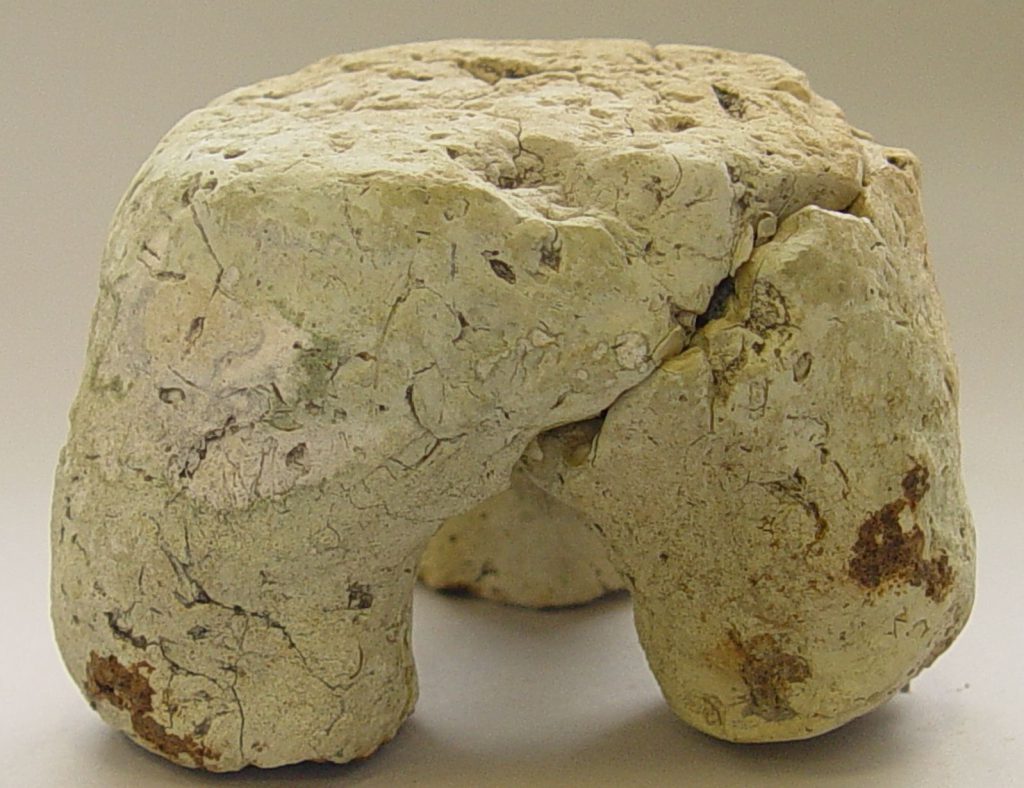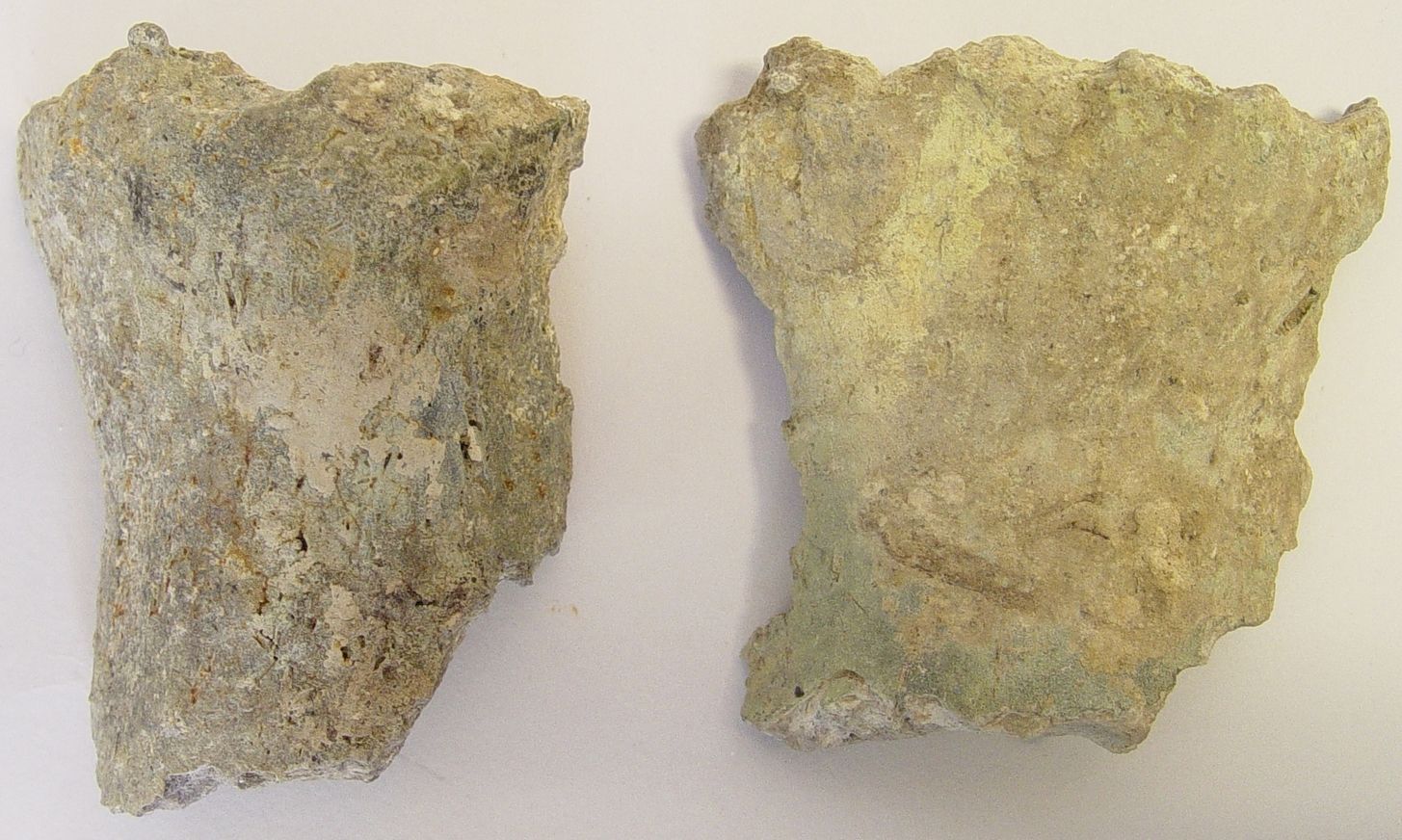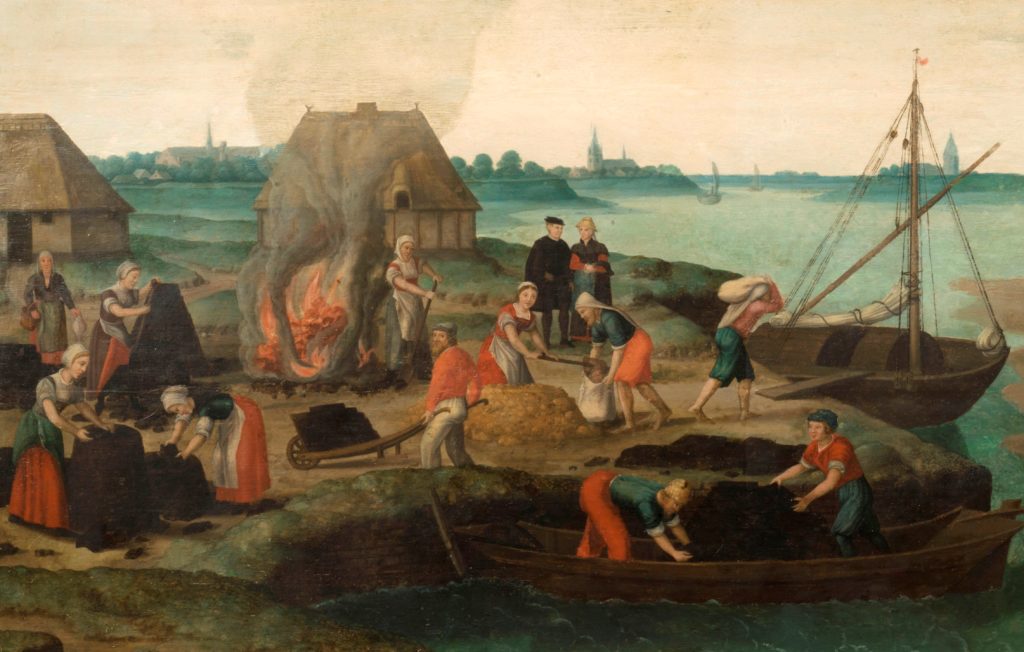Salt: Zeeland gold
Zeeland is a province where, if the wind is blowing, you can almost always smell the salt from the sea. Salt has been an important pillar of the economy for many years. It was very valuable because salt enabled you to preserve food for much longer.
The start of salt extraction
Salt extraction was already practised in the Iron Age, as evidenced by traces found near Oostkapelle. Among the finds at a settlement dating from a couple of hundred years B.C. were rectangular sticks of baked clay. These were used as supports for pots where brine was evaporated into salt. Tripods have been found near Koudekerke. These were also used in salt production. A pot was placed on them and a fire stoked underneath. Whether this was done with salty peat soil or with saltwater is unknown. But what is clear is that the salt was also transported outside the region. Salt was therefore Zeeland’s first export product.

Tripod made of baked clay for prehistoric salt production (collection KZGW, photo Erfgoed Zeeland).
The Roman era
The Romans needed a lot of salt to to preserve their army’s supplies properly. Salt was so important to them that the state had a monopoly on its production. They even had special salt officials. The salt that was left over after supplying the army was traded commercially by salt merchants. They were called negotiatores salarii – a name that can be found on altars dedicated to the goddess Nehalennia that have been fished up from the Oosterschelde.

Two fragments of the rims of Roman salt containers from Middelburg-Mortiere: the left fragment has been burnt and sintered (Erfgoed Zeeland).
Salt extraction
The fact that salt extraction was of utmost importance in Roman times is also proven as no less than eleven locations have been found that are linked to Roman salt extraction. At most of these locations, the remains of ovens and furnaces have been found, but at Kapelle, part of a wooden construction was discovered that served as a salt pan. Incidentally, salt extraction did not always go well. A salt container was found in the Mortierewijk in Middelburg, filled with pots that had been placed over a fire that had been stoked too hard. They burned and broke.
Fish sauce
The Romans also used to produce fish sauce (allec) in Zeeland. Part of the Zeeland salt was used as a raw material for this liquid salt. It was also made from shellfish such as mussels and cockles, small fish such as anchovies and sprats, and about fifteen different herbs. Just like salt, fish sauce was traded outside the region by merchants. A great deal of fish sauce was made near Aardenburg. You can find out more in the Aardenburg Municipal Archaeological Museum.
Salt extraction in the Middle Ages
Salt extraction was an important source of income in the Middle Ages. It was produced near Goes, Reimerswaal, Tholen, Vlissingen, Zierikzee and in Zeelandic Flanders. The process of extracting salt was called ‘zoutzieden.’ Peat was dug out in the many peat areas that abounded in the province. The peat was burned and the remaining ashes were mixed with seawater. This would be followed by a process of mixing and boiling. This was done in salt huts – simple wooden buildings. Afterwards, salt was left over, along with the waste product, zelas. That was dumped in large piles. In Vlissingen, you can still find two streets named after this: Korte Zelke and Lange Zelke.
The Stadhuismuseum Zierikzee has a painting in its collection that depicts the entire process of salt extraction – from digging up the peat to firing up the salt hut.

Detail of a painting (from around 1540) depicting the various stages of peat extraction and salt production (Stadhuismuseum Zierikzee).
Trade
Also in the Middle Ages, most of the salt was intended for export. Salt extraction was at its peak in Zeeland in the fourteenth and fifteenth centuries. And it involved a lot of salt. In 1422/1423 for example, Biervliet produced nine million kilos of salt – almost all of it for export.
Hazards
The salt huts emitted toxic fumes and the wooden buildings regularly went up in flames. A burning salt hut was also the cause of the massive town fire in Goes at the end of the sixteenth century. Because of this risk, the huts were often built just outside the town. The most dangerous aspect, however, was the excavation of salt and peat (also called moernering or darinkdelven). This weakened the coastal defences. Many drowned areas (for example Oud-Rilland, Stavenisse and Reimerswaal) were located close to peat-cutting areas. Moggershil on Tholen also perished due to peat cutting. Ironically, their coat of arms features a peat spade with six slabs of cut peats.
Traces of peat cutting can still be seen in many places outside the dykes. For example, at Rilland on the Westerschelde coast. You can see from the neat, straight trenches and mounds exactly how people worked here.
Prohibition
Eventually, the practice of mining peat bogs was banned because it was too dangerous. It took another few centuries before the ban on digging peat was completely adhered to. During the First and Second World Wars, it even briefly came back into use because there was a shortage of fuel at the time. After peat cutting had stopped, Zeeland continued to process salt from abroad for some time. Arnemuiden, Goes, Reimerswaal and Zierikzee became major salt hubs. But it was not until the 19th century that the Zeeland salt trade came to an end.
More information about salt extraction in Zeeland can also be found in a short video from the Zeeland canon.
